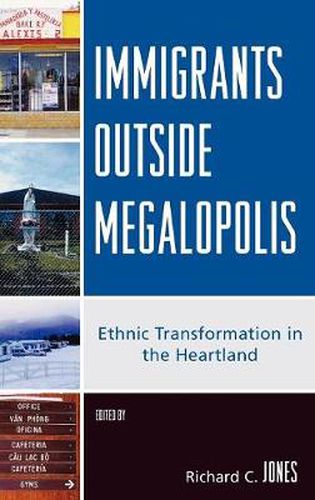Readings Newsletter
Become a Readings Member to make your shopping experience even easier.
Sign in or sign up for free!
You’re not far away from qualifying for FREE standard shipping within Australia
You’ve qualified for FREE standard shipping within Australia
The cart is loading…






The booming 1990s saw a new demographic pattern emerging in the United States-the shift of immigrants toward smaller towns and metropolitan areas in ethnically homogenous (or traditionally bicultural) areas. These places offer growing, specialized economies in need of unskilled or semi-skilled (and occasionally skilled) labor; they also offer, for some immigrants, a favorable physical and social climate.
Immigrants Outside Megalopolis documents this trend with case studies including Hmong in Wisconsin, Iranians in Iowa, Mexicans in Kansas and Colorado, Vietnamese in coastal Louisiana, Mexicans in North Carolina and south Texas, Cubans in Arizona, Bosnians in upstate New York, Asian Indians in north Texas, and Ukranians and Russians in the Willamette Valley of Oregon. Truly, this process is resulting in a cultural transformation of the U.S. heartland. The implantation of new features on the cultural landscape (businesses, homes, churches, schools, possessions, and the peoples themselves) is giving many Americans a world geography lesson-at a time when increased world understanding is something the country cannot do without. This geography lesson comes at a cost, however: the difficult process of social adjustment, playing out on a daily basis between immigrant and host populations, which remains largely unresolved. This process is an important focus of Jones’s book.
$9.00 standard shipping within Australia
FREE standard shipping within Australia for orders over $100.00
Express & International shipping calculated at checkout
The booming 1990s saw a new demographic pattern emerging in the United States-the shift of immigrants toward smaller towns and metropolitan areas in ethnically homogenous (or traditionally bicultural) areas. These places offer growing, specialized economies in need of unskilled or semi-skilled (and occasionally skilled) labor; they also offer, for some immigrants, a favorable physical and social climate.
Immigrants Outside Megalopolis documents this trend with case studies including Hmong in Wisconsin, Iranians in Iowa, Mexicans in Kansas and Colorado, Vietnamese in coastal Louisiana, Mexicans in North Carolina and south Texas, Cubans in Arizona, Bosnians in upstate New York, Asian Indians in north Texas, and Ukranians and Russians in the Willamette Valley of Oregon. Truly, this process is resulting in a cultural transformation of the U.S. heartland. The implantation of new features on the cultural landscape (businesses, homes, churches, schools, possessions, and the peoples themselves) is giving many Americans a world geography lesson-at a time when increased world understanding is something the country cannot do without. This geography lesson comes at a cost, however: the difficult process of social adjustment, playing out on a daily basis between immigrant and host populations, which remains largely unresolved. This process is an important focus of Jones’s book.